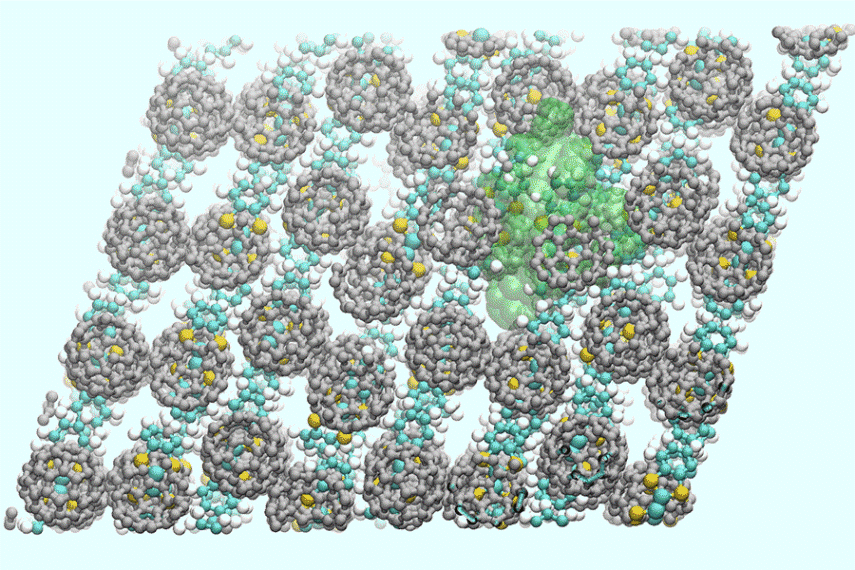Apr 20 2018
The so-called grow monsters or expandable water toys are nothing but plastic-like figurines with the ability to expand upon being placed in water.
 The simulation shows molecules struck by light causing the 2D nanosheet to expand. (Image credit: Richard Remsing, PhD, Temple University)
The simulation shows molecules struck by light causing the 2D nanosheet to expand. (Image credit: Richard Remsing, PhD, Temple University)
Innovative materials science research takes cues from this idea. However, in this field, engineers found that tiny crystal lattices, known as “self-assembling molecular nanosheets”, expanded upon exposure to light, in the place of water.
The breakthrough has been reported in the Proceedings of the National Academy of Sciences in March 2018 and could become the foundation of innovative oscillators, light-driven actuators, and other microscopic electronic components helpful in developing artificial muscles and other soft robotic systems.
According to Shenqiang Ren, the co-lead author of the study and a researcher at the University at Buffalo’s RENEW Institute, working to solve complicated environmental problems, the focus of the study is a materials science concept called photostriction, or the effect of directly converting light into mechanical motion.
“In this case, we’re using light - anything from sunlight to a simple laser - to cause the two-dimensional nanosheet to expand at an incredibly fast rate,” he stated.
The rate of expansion of the nanosheet is of the order of only sub-milliseconds. As stated by Ren, Ph.D., a professor in the Department of Mechanical and Aerospace Engineering in the UB School of Engineering and Applied Sciences, the process is supported by the photostrictive effect, which typically avoids the need to generate electricity to move things.
The study has found out that the nanosheet is formed of buckyball molecules and the molecular charge-transfer compound DBTTF, and it can expand up to 5.7% of its actual size.
Although this might not seem to be much, consider the following scenario: a man weighing 200 pounds and expanding up to 5.7% would have to add 11.4 pounds within a second to keep pace with the light-induced nanosheet.
Although expandable water toys swell considerably more than this, they do not return to their actual size. In contrast, the nanosheet returns to its original shape, rendering it prospectively very useful as a light-triggered actuator in artificial muscles, which could be applied in various areas such as medical devices and industrial robotics.
Scientists from Temple University and Nanjing University of Science and Technology in China contributed to the study. Grants from the U.S. Department of Energy and the U.S. National Science Foundation supported the study.